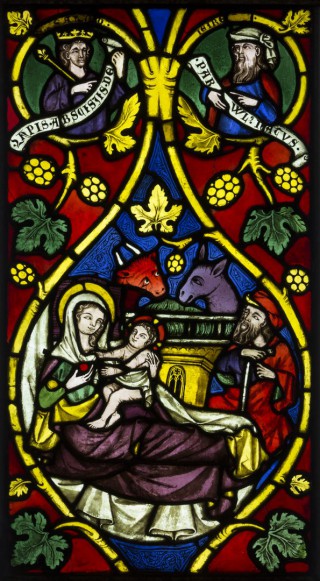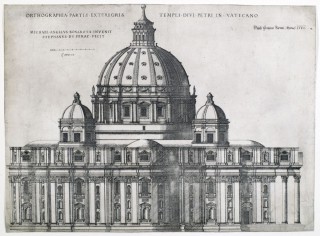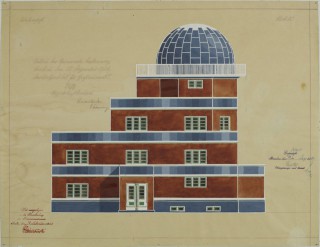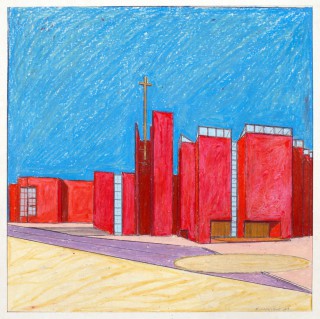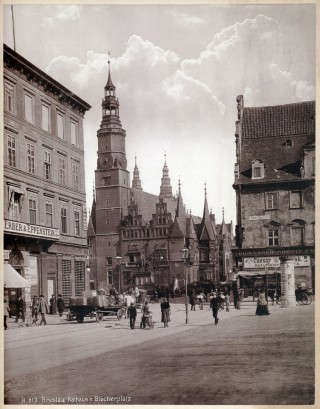Department of Architecture of the 19th and 20th century
The Department of Architecture of the 19th and 20th century is comprised of a collection of modern architecture, including artifacts from the years 1800-1914, and a collection of interwar architecture that includes objects from the period between 1914 and 1945. Both collections have a completely distinctive character. The first contains a variety of artifacts, from the collection of graphics, drawings and stencils, through an impressive (both in terms of its quantiy and quality) collection of architecture-related artistic crafts, to a small collection of furniture. The second, more homogeneous collection consists mainly of design materials documenting the development of architecture (mainly Polish) in the years 1914-1945 and the archives connected with the life and activity of outstanding Polish architects of that period.
The Architecture of the 19th century
Collection from the years 1800–1914 amounts to around 3090 artifacts, out of which almost 1400 are iconographic artifacts. It includes 730 graphics that depict old and modern architecture, major urban planning schemes, as well as city vernaculars and panoramas.
Part of the prints present ancient buildings from Egypt and Italy, others present new buildings of growing European capitals such as Berlin, Paris, there are also representations of interesting monuments from Lower Silesia and Wroclaw. The graphics documenting the region are the works of eminent Silesian engravers, including Maximilian Grossmann, Otto Probst and Robert Geissler. The iconography collection is complemented by drawings (over 70), designs (around 120), city plans and more than 300 stencil sheets, among which the most famous are those made by Karl Friedrich Schinkel and Charles Rennie Mackintosh.
In the collection of iconography, two oil paintings by Adalbert Woelfl (Ulica Kurzy Targ and Kamienica Pod Gryfami), Carl Denner’s gouache overlooking the Imperial Bridge (now Grunwaldzki Bridge) and a watercolor by Emil de Canver - Nowy Ratusz are particularly significant. Polonicas constitute another noteworthy part of the collection: a drawing of an angel from the polychromy in St. Mary’s Basilica in Cracow signed by Jan Matejko, cardboard of the Dies Irae stained glass by Kazimierz Sichulski and lithographs by Napoleon Orda depicting Borderland settlements.
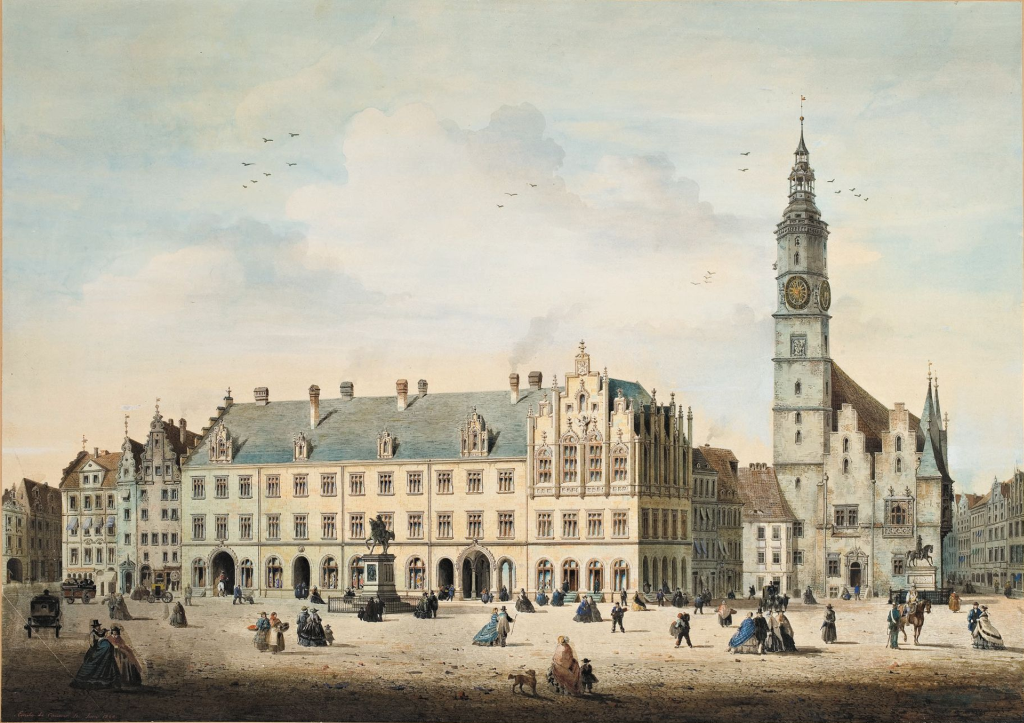
The collection of artistic crafts from the years 1800-1914 mainly consists of tiles and flagstones (over 360 in total), door locks (almost 800 pieces), ceramic (22) and cast iron (7) furnaces, various architectural details made of metal or stucco, window glazing and decorative doors. These works of art from the nineteenth and early twentieth century use the ornamentation typical for historicism and secession.
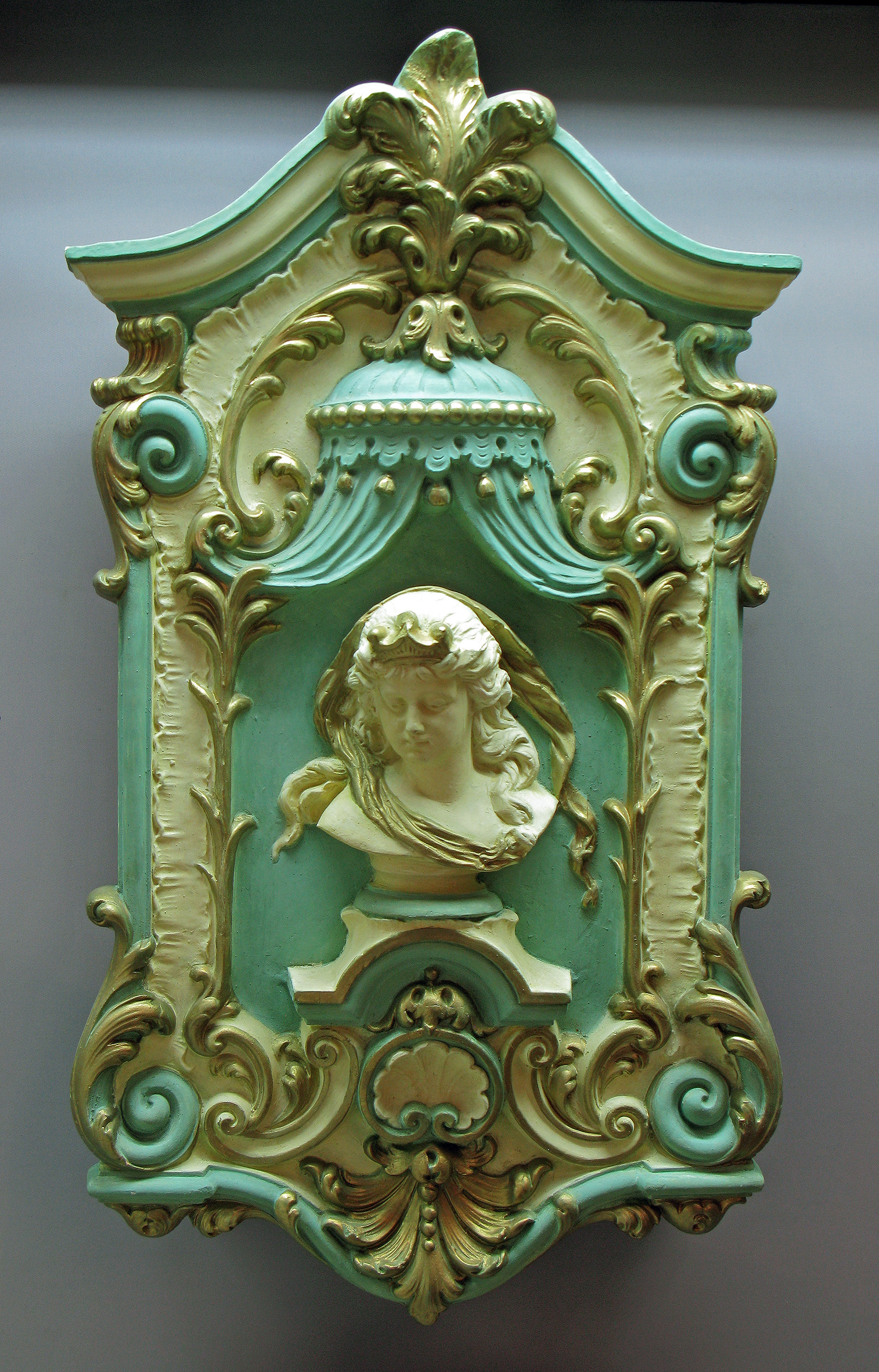
Most of them are industrial products, mainly mass-produced, and made perfectly on the basis of good artistic designs. Particularly noteworthy is a unique set of over 140 stained glass and decorative glazing elements, made in the centuries-old tradition of handmade craftsmanship.
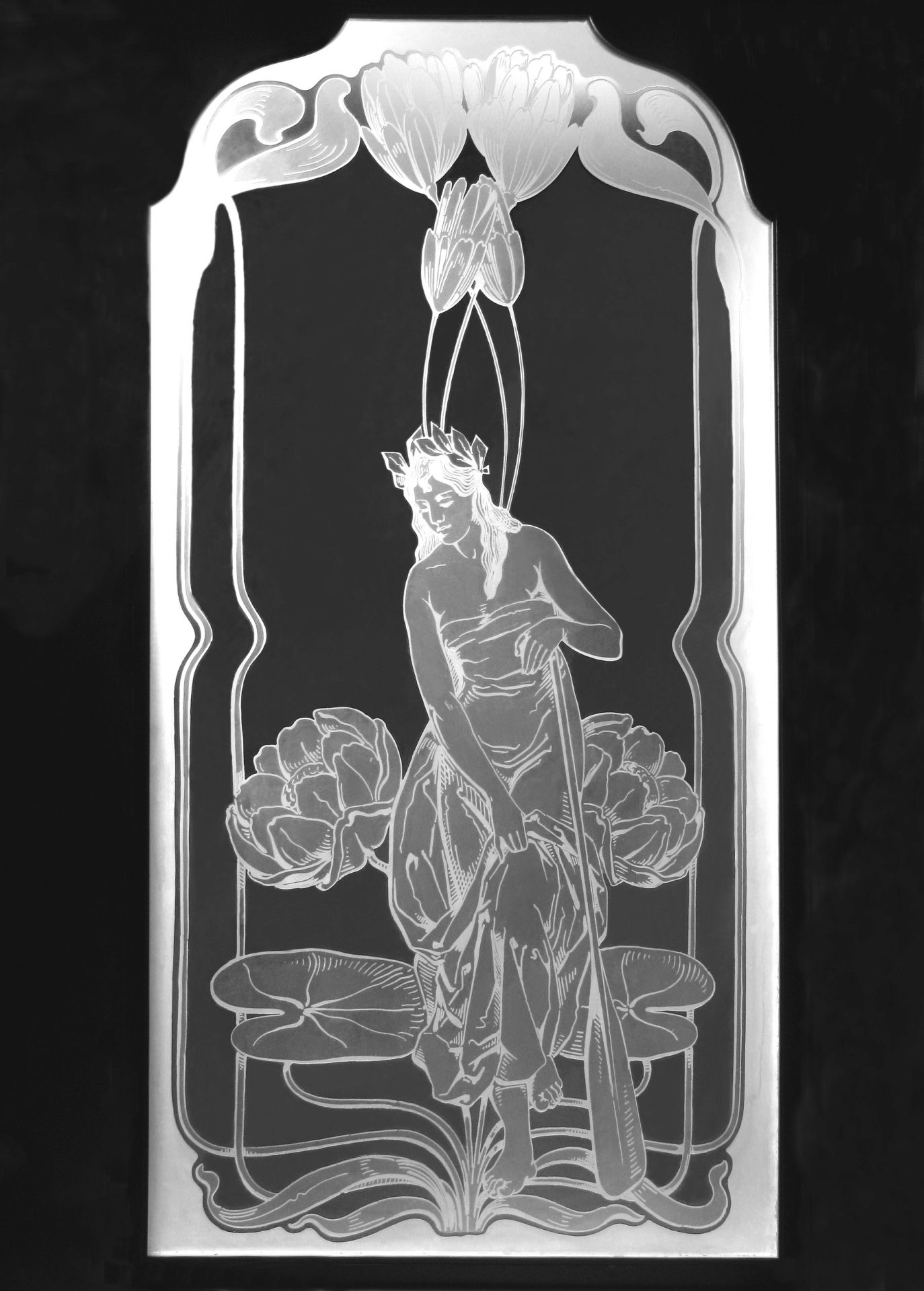
The quality of the stained-glass collection points its provenance to the renowned workshops from the German-speaking countries. It is also confirmed by the preserved signatures of some of the artifacts: Johannes Prechtel, brothers Andreas and Lorenz Helmle, Fritz Geiges and Adolph Seiler.
Many of the tiles and furnaces in the collection were created in the well-known factories of the Teichert brothers in Meissen, famous Velten tileries near Berlin and in the workshops in Berlin and Wroclaw.

The only group different from the German ceramics is a set of Zakopane tiles from Koliba villa designed by Stanisław Witkiewicz in the 1890s. Metal products in the collection (mainlymade of cast iron and brass) mostly include door locks with a beautiful collection of Art Nouveau antabs, handles and signs (over 770). The larger castings include furnaces from the Saxon steelworks of the Einsiedel family and the steelworks in Nowa Sól, balustrade balusters, acroterions, chandeliers, eclectic and neo gothic doors, neo-Baroque grates and an Art Nouveau gate with the sign Zum goldenen Anker.
Text by Magda Ławicka
Interwar architecture (1914-1945)
A collection interwar artifacts was created almost from the beginning of the Museum of Architecture within the Department of Contemporary Architecture, first elements of the collection were obtained in 1967. The time frame of the collection was set between the beginning of World War I and the end of World War II, but it also gradually included earlier and later objects. The vast majority of the collection consists of works from private archives of Polish architects that they or their heirs have donated over decades. The collection consists mainly of architectural designs, drawings and models, as well as personal materials, including documents, sketches, photographs, medals and correspondence. Part of the collection was purchased from individual collectors or on the antiquarian market. The systematically collected group of artifacts now numbers over 4300 objects, dating from the 1870s to the end of the 20th century.
The most numerous group (1170 objects) are the works of Bohdan Lachert, most of which were created in collaboration with Józef Szanajca within an architectural company that flourished until the tragic death of Szanajca in September 1939. Their artistic output includes very diverse designs (including numerous competition designs) of modernist architecture, from sacred buildings (St Roch Church in Bialystok), exhibition pavilions (Eternit, Centro-Cement and Budownictwo pavilions at the Polish General Exhibition in Poznan), office buildings (Warsaw headquarters of the Airborne and Antigas Defence League and the Polish Radio), public buildings (Post and Telecommunications Office on Targowa Street in Warsaw), health care buildings (PCK hospital in Warsaw, sanatoriums in Tuszyn and Łagiewniki near Lodz), schools (grammar schools in Ciechanki and Stara Miłosna, Commercial School complex in Vilnius), numerous residential buildings – both individual houses for private investors (Olimpia and Antoni Szyller’s house near Wał Miedzeszyński in Warsaw), multifamily houses (State Pension Funds houses in Solec district in Warsaw), housing estates (ZUS housing estate in Żoliborz district in Warsaw) as well as arrangement, interior design, furniture or visual identification projects. Most of them got to the Museum of Architecture in connection with the 1980 exhibition “Bohdan Lachert, Józef Szanajca. Architecture”, thanks to which Bohdan Lachert donated a large part of his archive to the museum collections.
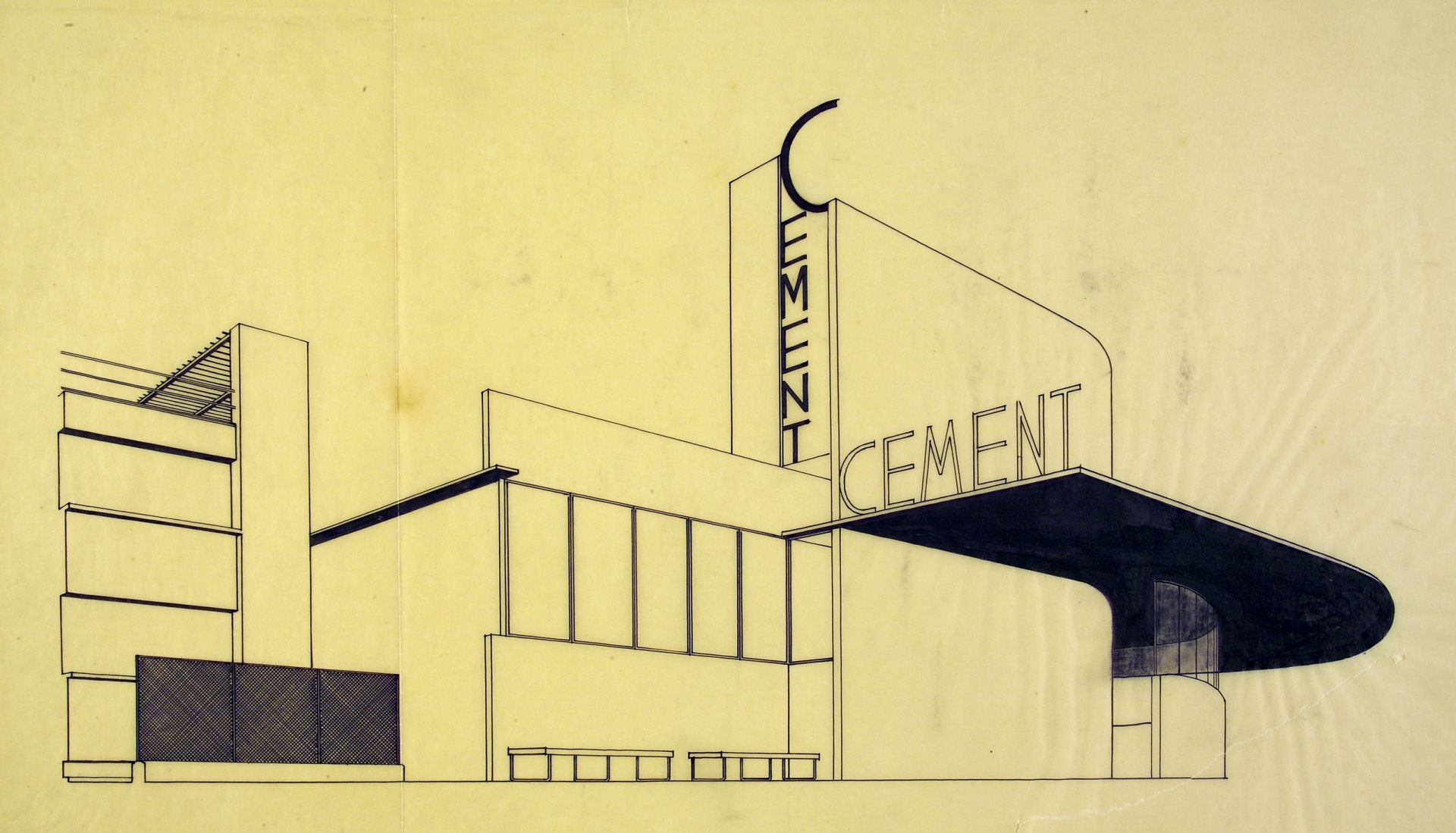
Bohdan Lachert, Józef Szanajca, design of the Centrocement pavilion at the Polish General Exhibition in Poznan, 1928
The second largest collection consists of works by Jan Koszczyc-Witkiewicz (665 objects) which includes designs of the Warsaw School of Economics, sacred and public buildings, houses and manor houses, as well as furniture.

Jan Koszczyc-Witkiewicz, design of the Folk University in Gacia, 1934
Another significant group in the collection constitutes the private archive of Helena and Szymon Syrkus (over 330 objects) that includes designs and photographic documentation of the Warsaw Housing Cooperative housing estates in Rakowiec and Koło, manuscripts of Helena Syrkusowa’s book chapters, as well as a rich collection of documents, photographs, personal memorabilia and correspondence, among them particularly valuable letters written by Szymon Syrkus to Helena from the concentration camp in Auschwitz.
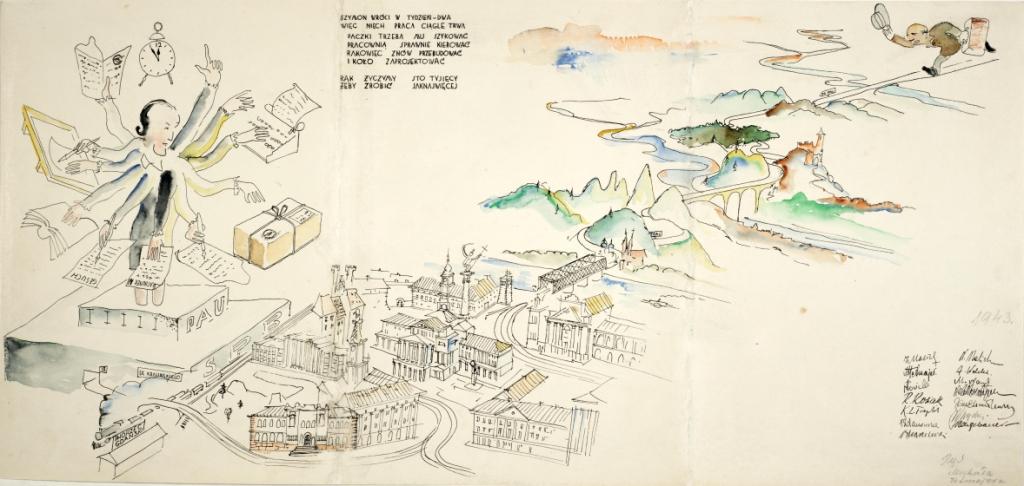
Michał Tetmajer, occupation laureate for Helena Syrkus with signatures of her collaborators from the conspiratorial Architecture and Urban Planning Laboratory, 1943
The Lviv architectural community is also well represented in the interwar collection, mainly by the works of students and graduates of the Faculty of Architecture of the Lviv Polytechnic: Czeslaw Boratski, Andrzej Frydecki, Józef Gałęzowski, Tadeusz Michejda, Andrzej Nitsch, Tadeusz Teodorowicz-Todorowski and Krystyna Tołłoczko-Różyska.
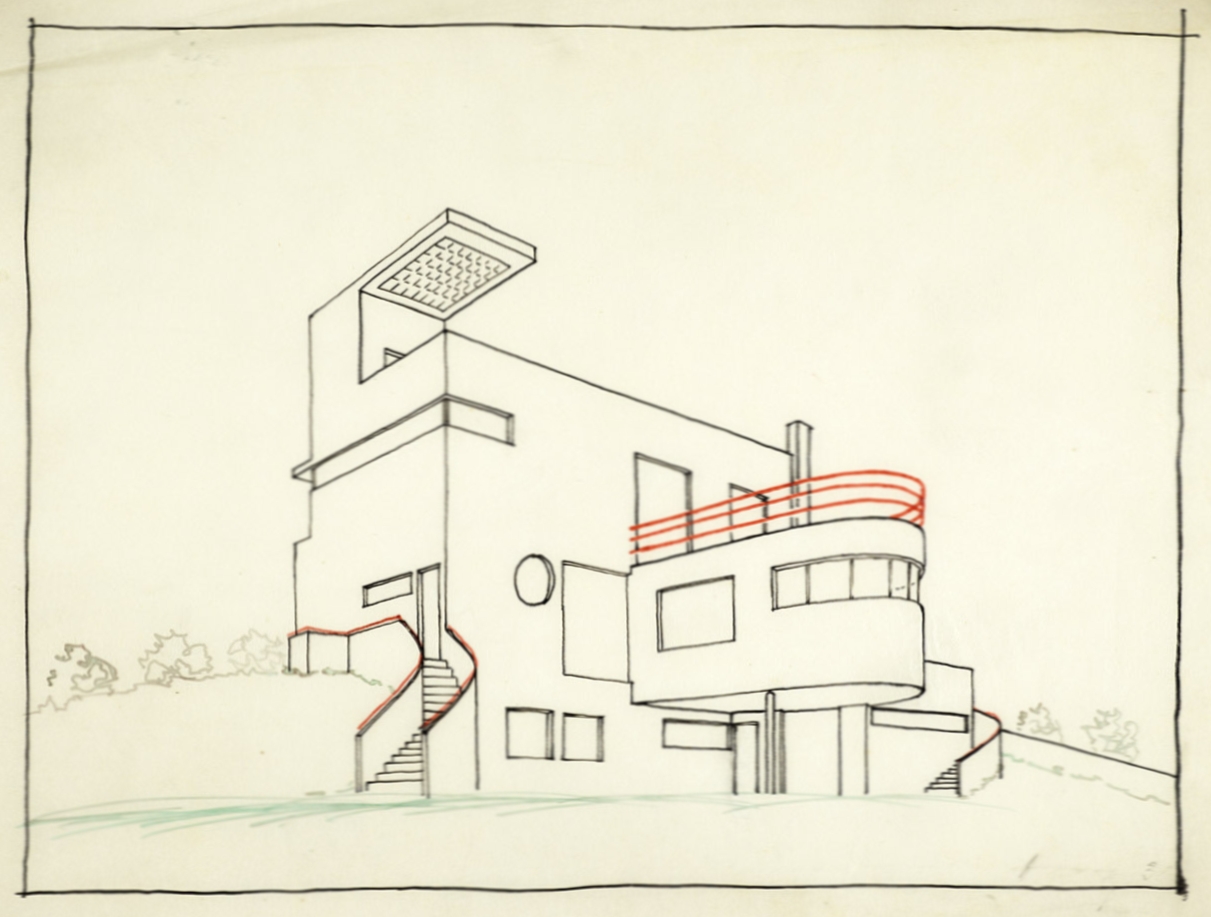
Tadeusz Teodorowicz-Todorowski, design of a modernist house, 1931
The collection also includes Romuald Gutta’s early works, designs and archives of Adolf Szyszko-Bohusz (including his memories of the German occupation of Wawel and its reconstruction designs), Władysław Borawski, Maksymilian Goldberg, Wacław Krzyzanowski, Stefan Narębski, Jan Zachwatowicz, and Gebhard Utinger’s artworks.
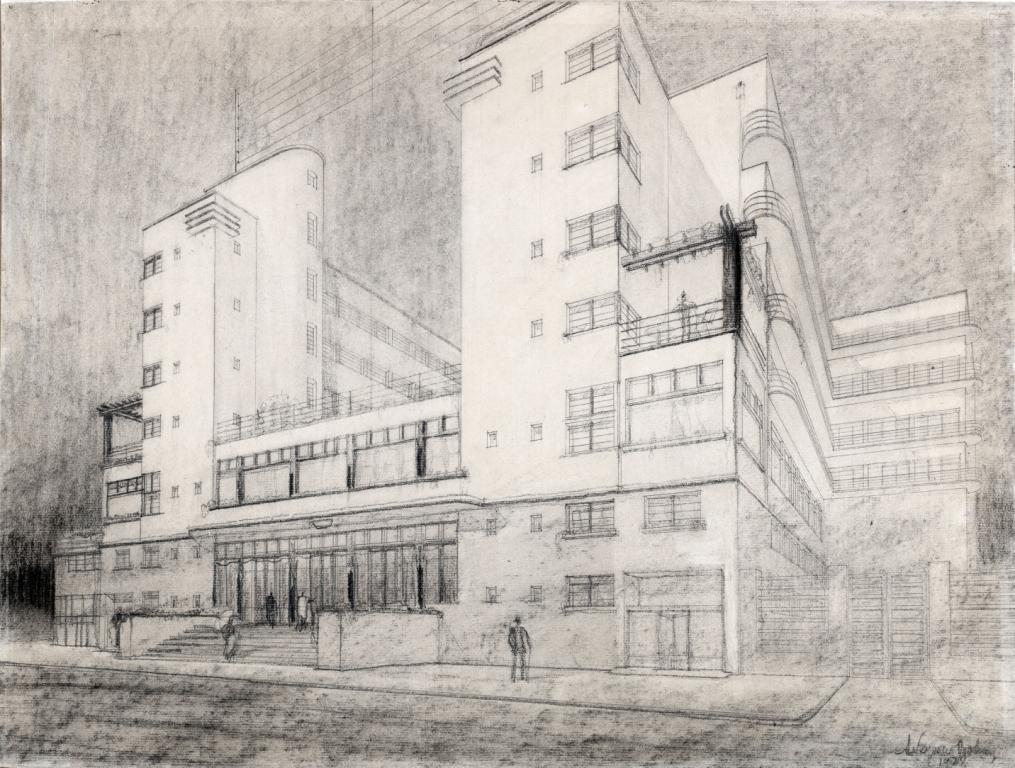
Adolf Szyszko-Bohusz, design of a hotel in Krynica, 1928
In addition, the collection includes inventory drawings of housing estates of the Central Industrial District (COP), erected before World War II in Mielec, Stalowa Wola, Rzeszów and Pustków, made in the 1980s at the Rzeszów University of Technology.
At the beginning of the 1990s, the interwar collection was expanded by the private archive of Heinrich Lauterbach, the initiator of the Wrocław WuWA exhibition. The preserved collection of designs, drawings and photographs documents almost all of his architectural activity until the outbreak of World War II and includes such prominent examples of modernist architecture as designs from Wroclaw (tenement building at 8 Kraszewskiego Street, a housing quarter on Słubicka Street in Szczepin district, terraced and single-family houses developed at the WuWA exhibition) and Czechoslovakia (Jaroslav and Zdeňka Hásek’s and Friedrich Schmelowsky’s houses in Jablonec over Nisou).
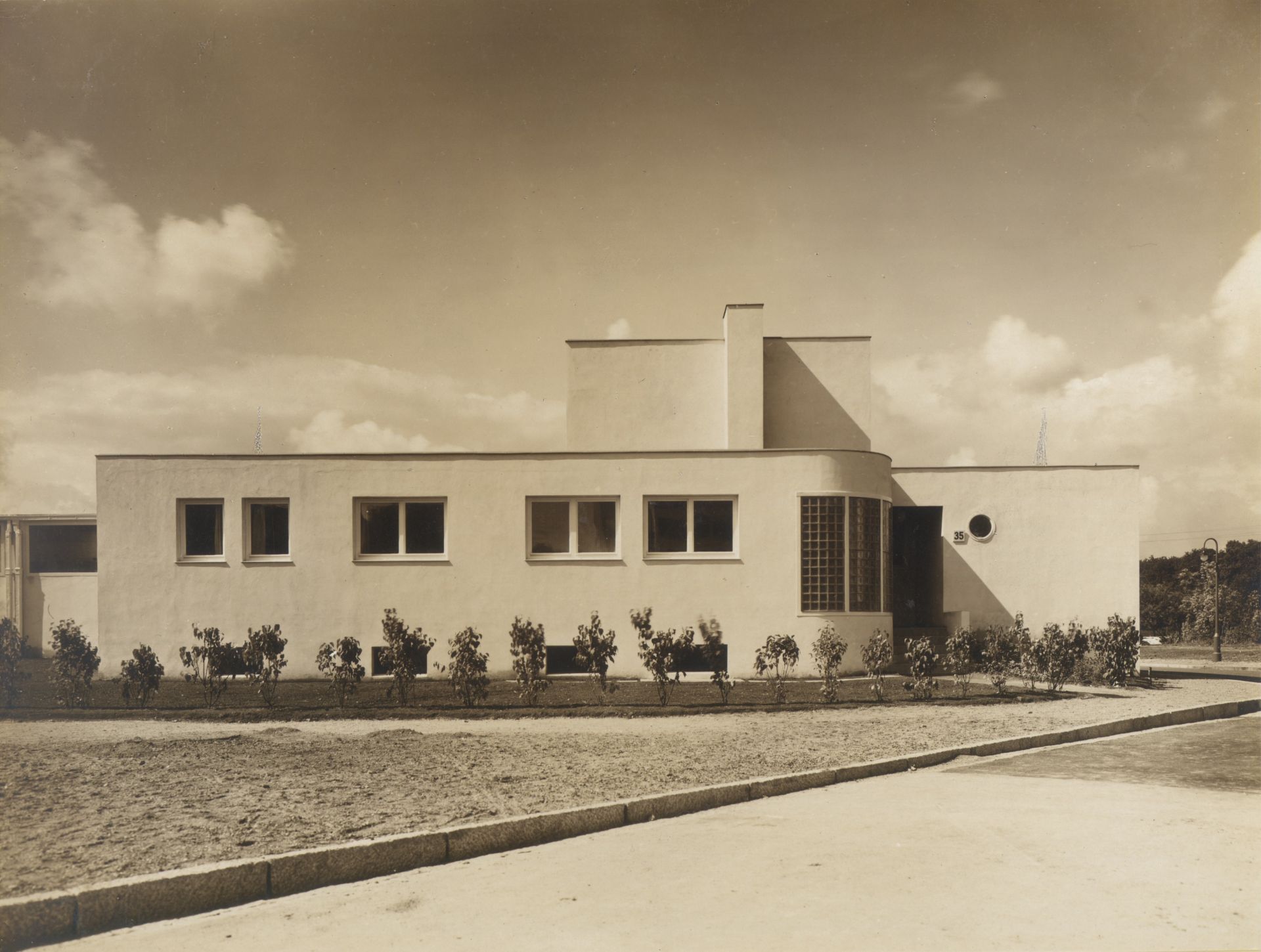
House no. 35 at the WuWA exhibition, designed by Heinrich Lauterbach, photo by Heinrich Klette, 1929
The collection also includes photographs of Wroclaw architecture - terraced houses, single- and double-family houses developed at the WuWA exhibition and photographic reproductions of Max Berg’s projects (e.g. the Centennial Hall).
Archival documents related to the architects of the interwar period are also available in the library collection of the Museum of Architecture (texts written by Andrzej Frydecki, Jan Koszczyc-Witkiewicz, Bohdan Lachert and Helena Syrkus, collections of Andrzej Nitsch).
